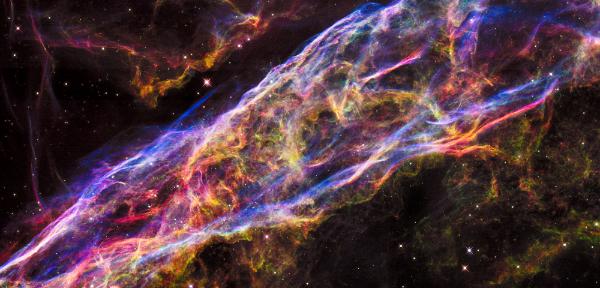
Astronomers Using Blockchain Tech to Study the Stars
“We cut the sky up into small images that fit the pre-trained network: 224×224 pixels,” Peek says in an Ask Me Anything session before adding:
“Right now we are in a testing phase, kicking the tires, getting the API just so, etc. But there are ~100 TB of Hubble images and PBs of images from other astronomical surveys.
Due to the way the algorithms work, we need to send them in a lot of different ways, zoomed, flipped, strided, etc.
That means we could be looking at tens of millions of CPU hours and up. That’s pricey on commercial cloud, and much cheaper with Hadron/Aikon.”
Interrogation follows. “Some sharp cookies over here,” Peek says. They’re basically using machine learning, or “pre-trained convolutional neural networks,” to organize deep space images.
They then cluster it all, allowing scientists to search for images that are similar to other images. “They could turn into a very powerful tool for astronomers to search huge archives for objects of interest,” he says.
Clustered data.
Which is all cool, but what’s the blockchain gotta do with all this? Well, in many ways nothing, not directly anyway.
The blockchain in this set-up is merely a co-ordinating tool to incentive distributed computers to provide CPU power so that all these neural networks and scientists can do whatever they do.
“It’s the distributed network. We can do what we do on a laptop no problem, but it takes foreeeevvver. So being able to farm out these individual small tasks makes the process faster and cheaper,” Peek says.
Faster and cheaper is the important part because many wanted to know why not use Amazon Cloud. His answer was that it would cost a lot, while Hadron would be affordable.
Hadron is basically Golem, but specialized to specifically serve Peek and the kind of work he does. It allows individuals to sell idle computing power and receive in return CPU tokens.
Aikon, as we understand, is the interface between Hadron and the astronomers. The latter appear to be allergic to cryptos, so Aikon sort of “translates” it all into fiat.
“I can’t send the accounting department my CC statement saying I bought a bunch of weird crypto. So Aikon’s ability to ‘speak invoice’ is useful to me, – I buy Amazon credits all the time, and this process is designed to look just like that,” Peek says.
BitPay for dapp tokens? Interesting. In fact this whole project sounds quite interesting and arguably you can’t do it without a blockchain.
You could, perhaps, with fiat by asking all for their bank accounts or PayPal after signing up and so on, but with blockchain tech a lot of friction can be taken out, allowing for easy co-ordination of home laptops that then merge into a supercomputer of sorts.
Peek can then continue slicing the skies, now a bit more cheaply and with a bit more speed, to study and explore what mysteries deep space still keeps.
Copyrights Trustnodes.com